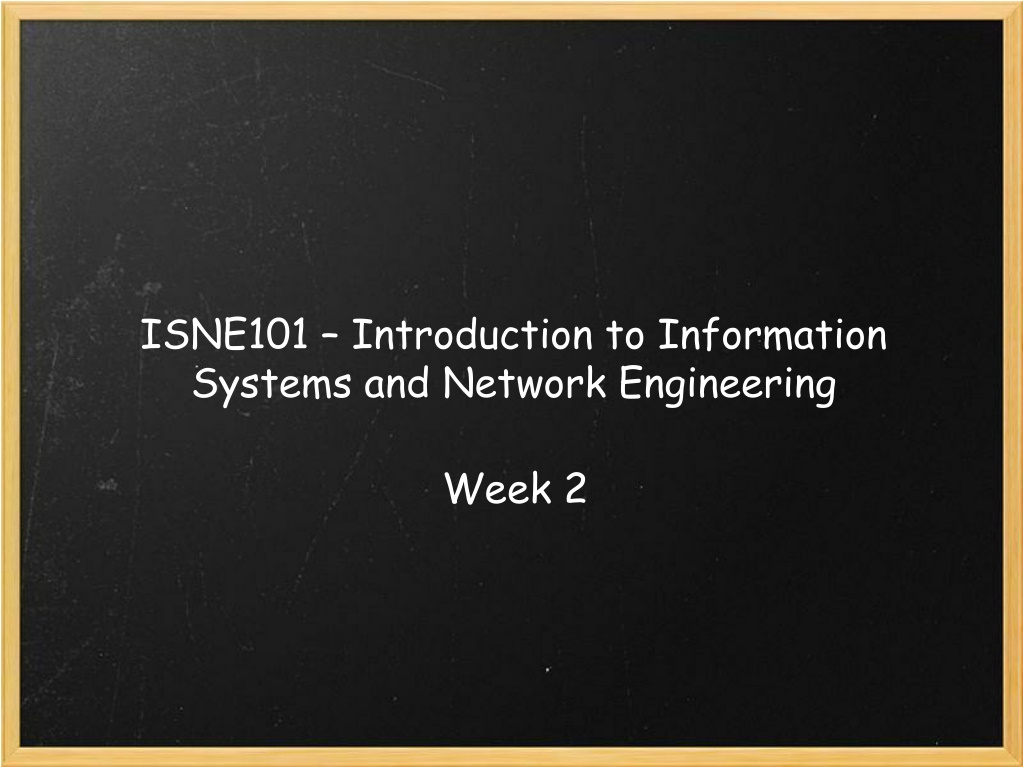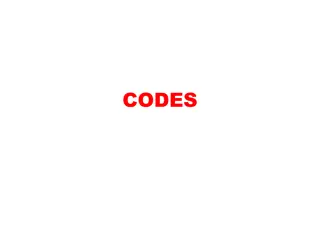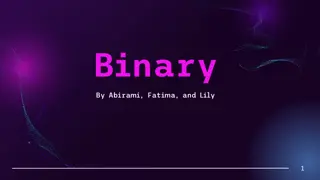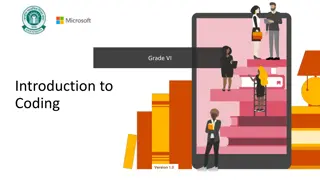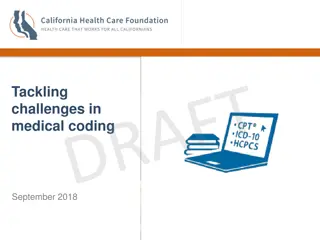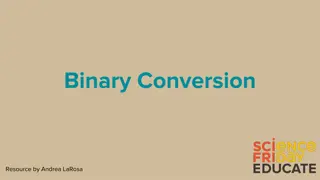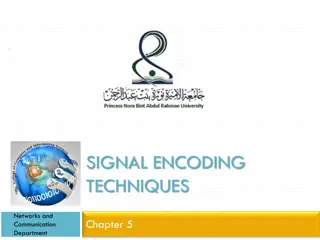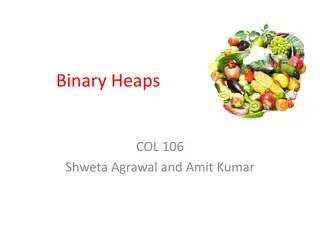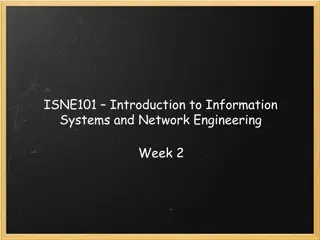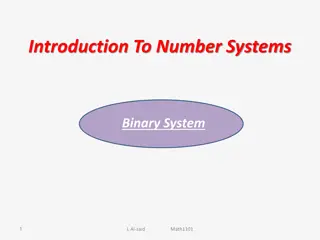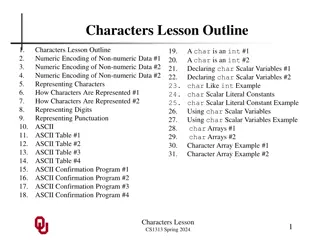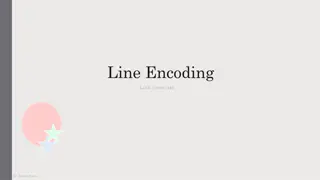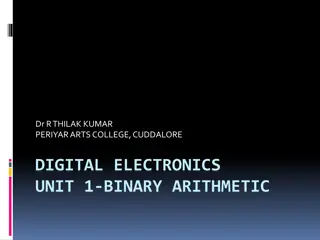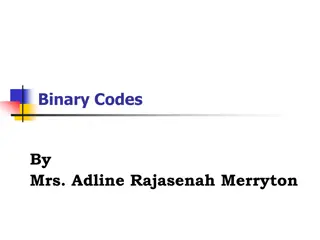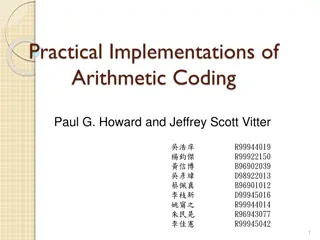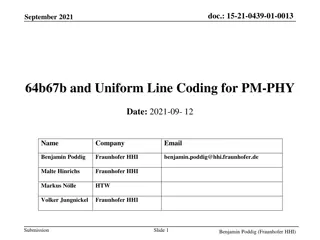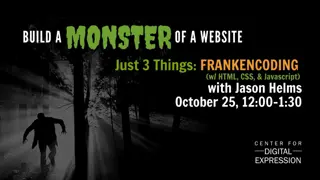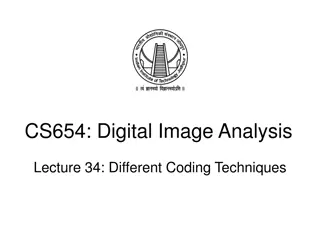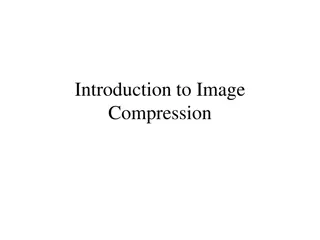Introduction to Binary Encoding and Huffman Coding
In this information systems and network engineering overview, delve into the world of binary encoding, Morse code, bits, bytes, and coding. Understand the principles of encoding objectives, prefix properties, code optimization, and Huffman coding. Explore how codes are optimized, symbols are represented, and efficient coding schemes are developed using Huffman coding. Learn how Huffman coding creates prefix-free codes based on symbol frequencies for optimal data representation.
Download Presentation

Please find below an Image/Link to download the presentation.
The content on the website is provided AS IS for your information and personal use only. It may not be sold, licensed, or shared on other websites without obtaining consent from the author.If you encounter any issues during the download, it is possible that the publisher has removed the file from their server.
You are allowed to download the files provided on this website for personal or commercial use, subject to the condition that they are used lawfully. All files are the property of their respective owners.
The content on the website is provided AS IS for your information and personal use only. It may not be sold, licensed, or shared on other websites without obtaining consent from the author.
E N D
Presentation Transcript
ISNE101 Introduction to Information Systems and Network Engineering Week 2
Recap Counting in Base 2 - Binary Introduction to Encoding Morse Code Bits Bytes and Binary Coding
Remember Morse? E is ".", T is "-", but Q is "--.-" Common letters have a short (quick!) code, while longer letters have a longer code. All symbols miforming the set M, have probabilities of occurrence P(mi) such that P(mi) + + P(mn) =1 Infrequently occurring symbols can be assigned a long code word, while short code words are reserved for frequent symbols.
Encoding Objectives Each codeword corresponds to exactly one symbol. Decoding should not require any look ahead. This is known as the prefix property.
Prefix Property Symbols: A, B, C Codes: 1, 0, 10 Message: 10 Is it AB ? Is it C ? In Morse code, how do we know "--.-" is Q and not "TTET"?
Prefix Property Symbols: A, B, C, Codes: 1, 00, 10 Message: 1000 Read in 1, is it an A? Read in 0, was it a C? Read in 0, Should it be AB? Read in 0, Ah, finally we can assume it was CB.
Code Optimisation The length of a code for one symbol should not exceed the length of a less likely symbol; if P(mi)< P(mj) then L(mi) < L(mj) There should be no unused short codes, either as stand alone encodings or as prefixs for longer codes. 01, 000, 001, 100, 101 is not ideal as 11 is not used.
Huffman Coding Huffman coding is a method for choosing a representation for each symbol, resulting in a prefix-free code The bit string representing some particular symbol is never a prefix of the bit string representing any other symbol The most common characters are expressed using shorter strings of bits than are used for less common symbols.
Huffman Coding Huffman creates a "Heap" based on the frequencies of each symbol. What is a "Heap"? A heap is a special kind of Binary Tree! Great! - What is a "Binary Tree"? It's a tree where each node has at most 2 children... Hmmm... - What is a "Tree"? OK, lets simplify!
A Binary Tree A Tree where each node has 0,1 or 2 children.
A Heap A Binary Tree where the root node has the highest value, and every parent's value is greater than their children. 12 8 4 3 1
Huffman Coding Begins by constructing a Heap based on the frequencies of each member of the set to be encoded. Each member is a leaf node, with parent nodes being the sum of their children. Take the set (with corresponding occurrence frequencies out of 120); A(10) B(15) C(5) D(15) E(20) F(5) G(15) H(30) I(5)
Huffman Coding Each letter's code is then read based on its position from the root - 0 for left, 1 for right. A = 000 B = 010 C = 0010 D = 011 E = 111 F = 00110 G = 110 H = 10 I = 00111
Creating the Heap? Based on frequencies, such as in the British National Corpus? Based on frequencies within the specified text (or image etc.) Standard Approach to Huffman What if we don't know the frequencies? Adaptive Huffman
